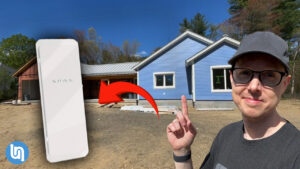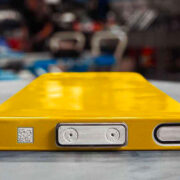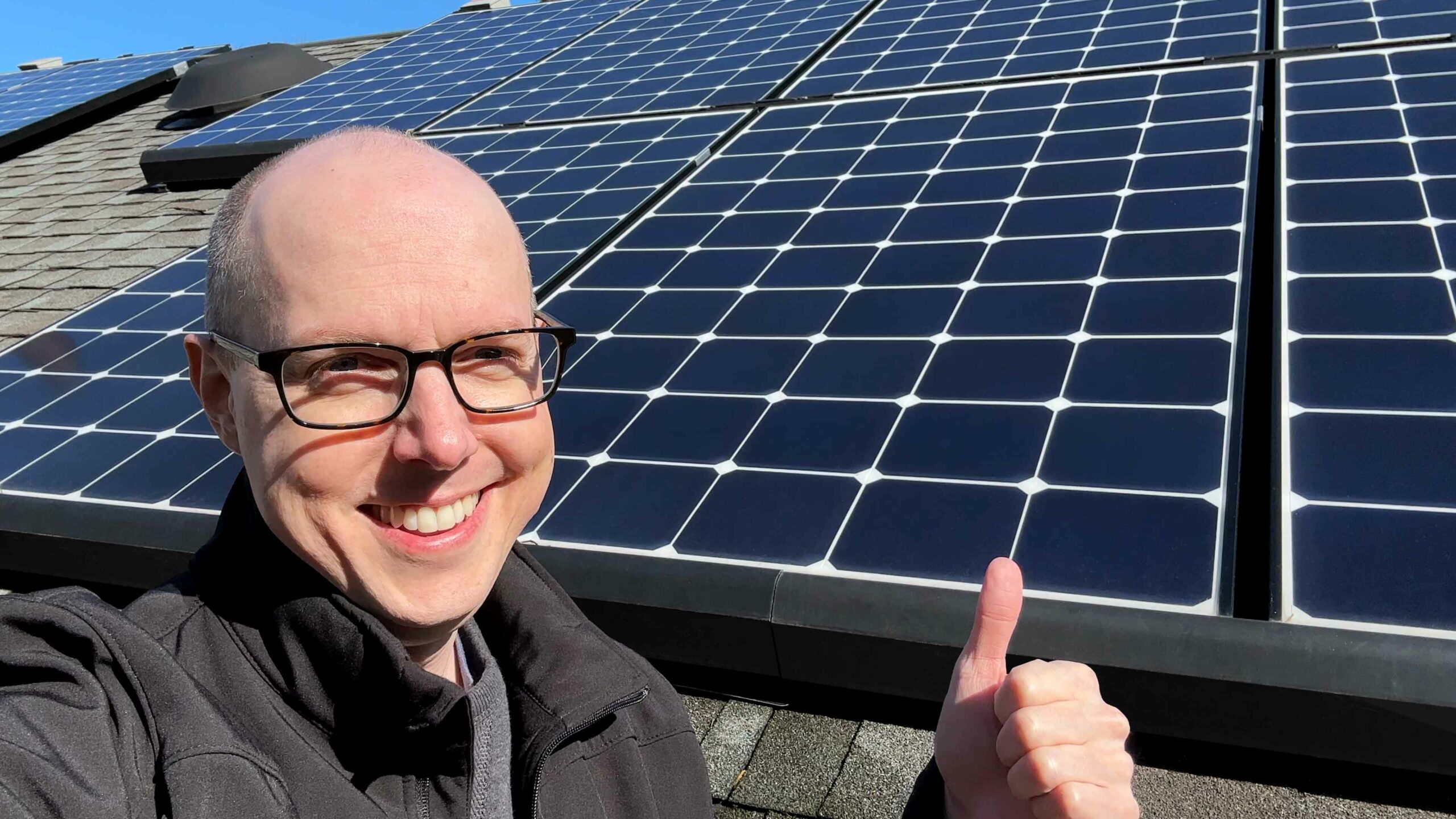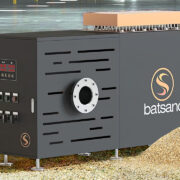This is Ascent Milwaukee. A gorgeous combo luxury apartment and retail space. But if you look closely, you might notice something special about this building… Figured it out yet? It’s made out of wood. That’s right, aside from a concrete garage and elevator shafts this 25 story-tall building is made almost entirely from timber, making it the tallest mass timber building in the world. It might not hold this title for long, as mass timber is rapidly growing in popularity due to a host of benefits including sustainability. But how are wooden skyscrapers possible? And isn’t it a little foolish to make a timber tower when a little thing called “fire” exists?
No bones about it, Ascent is an architectural achievement, and though it’s the tallest mass timber building, competitors for the title seem to be popping up almost everywhere. So what techniques have made wooden skyscrapers possible, why are they gaining popularity now?
Well, starting in the 1980s we developed a handful of techniques that combined lumber in new and exciting ways, making it stronger than the sum of its parts. Collectively known as engineered wood or composite lumber products, these materials first gained popularity in the 1990s, but with climate concerns only growing, the popularity of mass timber buildings has started to reach a kind of critical mass. There are a lot of variations on these mass timber materials, and we’re still developing new techniques, so I’ll just touch on a few to give you an idea for how they’ve allowed us to push wooden structures to new heights – literally!11
First up is Cross-Laminated Timber (or CLT), which is made by gluing sheets of lumber together at right angles. Normally wood is strongest along the grain, so by alternating the direction of the grain, CLT is strong all over! Wood is typically stronger in tension than in compression, and by varying the direction of the boards, some sections of the wood are in tension at all times. This makes it ideal for panelized jobs, the kind of stuff you’d ordinarily have to use concrete and rebar for, large, flat expanses like floors and walls.1 But CLT is lighter and stronger than concrete … or even steel.2
Then there’s Glue-Laminated Timber (Glulam), which is essentially CLT but all the grain runs in the same direction. This might make it seem inferior at first, but this means it excels in applications where you only need strength along a single axis.3 Think of support pillars and beams.4 It’s still incredibly strong – Glulam is one-sixth the weight of concrete and one-tenth the weight of steel,4 but it’s been proven to have a higher resistance to lateral-torsional buckling than steel.3 5 Engineered lumber isn’t limited to just these two types, but these are the big ones to know.
This all very interesting, but to paraphrase Dr. Ian Malcom: Just because we can, does that mean we should? Why construct buildings out of wood when we’ve done just fine with concrete and steel?
Why even build skyscrapers out of wood?
Mass timber buildings actually have surprising environmental benefits. Steel and concrete are responsible for a lot of carbon emissions. Every ton of steel produced in 2018 emitted a whopping 1.85 tons of carbon on average.6 Though pound for pound the concrete industry produces less carbon than steel, just 0.92 lbs of C02 per pound of cement, that’s still a lot of carbon because it’s the most popular building material on earth.7. And speaking more broadly, the building and construction sector alone accounted for 36% of final energy use and 39% of energy and process-related CO2 emissions in 2018.8
But logging a bunch of forests for their timber doesn’t sound like it’s going to help the climate. And while that could true, there’s some nuance to it.9 Let’s look at Norway. They’re forestry policies have made them a world leader in mass timber buildings.10 When I spoke to Jason Korb on my Still TBD podcast, the Principal Architect at Korb + Associates Architects who designed the Ascent building in Milwaukee, he had this to say about how the trees were sourced:
“At Ascent, which we’re gonna be talking about, our structural engineer estimates that even without planting new trees to replace the ones that are harvested, which they do by the way, the wood fiber in that building will be replaced by natural growth. In our case in North American forests, the analysis was done, in approximately 25 minutes. And again, that’s without planting any new trees. And the folks that supply this timber, you know, for every one they take, they plant two or three because they own their own forest. It’s in their interest to keep them healthy.” -Jason Korb
The environmental benefits seem pretty clear. Just one cubic meter of glulam timber stores about seven hundred kilograms of carbon dioxide, which is just phenomenal. 10 11 On top of the carbon capture, lumber is less energy-intensive to make than cement or steel, which means even less carbon emissions. In fact, its estimated that building a city out of mass timber could save us 106 billion tons of C02.12 And if we go about it sustainably (again, might be easier said than done), a push for more wooden buildings could mean a push for more forests, which obviously have a lot of other benefits to offer.
But isn’t building a tall structure out of wood just a massive fire hazard?
Surprisingly, no, as long as it is done right. Timber does of course burn, but at a very predictable rate and in a very predictable fashion.13 For comparison, steel tends to warp and buckle in weird ways around 1300°F(~700°C), but this can occur at temperatures as low as 200°F (121°C).[16] And concrete can start explosively spalling at just 390°F (200°C).14
In contrast, timber’s predictability means buildings can be reliably engineered to stay standing for long periods of time. We can even boost this durability with engineering tricks like flame retardant coatings or sacrificial layers of timber that the fire has to chew through before it gets to the structural components.
In testing, CLT retained its structural integrity while on fire for around two hours, while Ascent is rated for three hours!1818 This puts it on par with concrete and steel, as per the International codes,15 and gives people plenty of time to escape, and gives emergency services a reliable relative safety window to enter the building, help evacuate it, and put the fires out, etc… Cooler yet, it’s possible for the wood to fireproof itself.
“The timber sections in mass timber buildings in ascent are up to over 40 inches in depth. And so basically, imagine you’re camping and you throw a gigantic log on the campfire. It doesn’t burn. I mean, it’s there in the morning when you wake up. And so what happens is when you get sections of wood that are that large, unless they’re subjected to spectacular levels of energy, the outer layer of that wood chars and the char layer prohibits the flow of oxygen into the center of the member. And the wood basically fireproofs itself. And that’s been proven in test after test.” -Jason Korb
Factors like airflow and other flammable materials present will affect this, but this is proven in testing.9
“What they found was that they’re burning this thing in a chamber for three hours. The exterior of the members are at 1200 degrees F, but in the center it’s still 75 degrees F. That’s how well the protective layer works.” -Jason Korb
Another benefit of timber buildings is the speed and ease of their construction. Architects can construct a 3D blueprint of a building in modeling software, allowing pieces of engineered wood to be machinecut to precisely the right size before they’re transported to a building site.[12] As they’re only ordering exactly what they need, this method cuts down on waste, and is seen as a way of ‘risk-proofing’ the construction process.16
My own new house was actually built in a similar way. And since we’ve measured twice and cut once, so to speak, the actual construction process becomes a relatively simple matter of just putting the pieces together, kinda like LEGO.17 Because wood is lighter and easier to work with than concrete or steel, most of the work can be completed quickly with just a small team and a few power tools. Together, these features mean each floor in a mass timber building can be completed in as little as 5 days – that’s 20% to 50% faster than traditional methods depending on who you ask.171819
“You also gain great efficiencies in construction speed because it’s all prefabricated and other benefits. So there’s carbon capture, there’s speed, there’s carbon emissions during construction. For example, we saved thousands of truck trips by concrete mixing trucks to the job site, as opposed to a concrete building. At Ascent the timber structure is 19 stories tall. It was delivered by one truck. One truck and one driver just going back and forth between our project site and the port of Milwaukee where the timber was staged.” -Jason Korb
The prefab-focused model does have a couple of weaknesses though. Returning to our LEGO analogy, if the piece you need breaks or gets lost, there isn’t a back up waiting to go. You also can’t make one from scratch onsite. The custom part has to be rebuilt, which will take additional time and money.17 And shipping stuff, especially stuff as big and heavy as construction materials, comes with a hefty financial and environmental cost. This also means timber buildings probably aren’t going to be everywhere. Regions without locally available, sustainable sources of wood will find the shipping and fabrication costs outweigh timber buildings’ potential financial and environmental benefits.
Engineered lumber techniques are still in their infancy, and though the price has come down, for now they’re still around 26% more expensive than the old standbys.20 Though it’s also possible for timber to be financially competitive, mostly due to the time and labor savings.21 And according to some researchers the availability of lumber does mean the capital costs are 4.2% cheaper for mass timber buildings than concrete and steel.22
“It’s interesting. The material, at least in 2020 or even today, in most markets cost more. So the cost premium is easy to quantify. Concrete costs $35 a square foot, timber costs $40. You add that up across hundreds of thousands of square feet, that’s a big number, but there are savings that are a little more difficult to quantify.
For instance, Ascent is built on poor soils, which means that we had to drive steel piles up to 180 feet into the ground … the pile material is huge. Steel pipes filled with concrete. Because the timber is so much lighter than concrete, we had to drive approximately a hundred fewer piles than we would have if it was a concrete building. We saved a month on schedule because of that, in addition to the cost of the piles and saving the environmental impact of those piles.
Another example is if this was a concrete building on the day they were pouring a deck, there would have been 30 to 40 workers on the deck. In a timber building, we have eight to 10.” -Jason Korb
And the costs should continue to fall as mass lumber techniques and materials become more common.
“If we were to design this building in 2023, it would not be built the way it was built in 2020 because the technology is advancing so fast that things that we had to do to connect pieces, for instance, in 2020 … New connections have been designed and tested since then, that will cost much less money and they will make this technology more widely available.” -Jason Korb
What’s on the horizon?
While the benefits of mass timber buildings have yet to be conclusively proven, their promise — plus the admittedly very cool aesthetic — has been more than enough to entice several groups into greenlighting structures like Ascent Milwaukee all around the globe.
Scandinavia is leading the wooden charge here, helped in part by their massive spruce and pine forests and long history of forestry.23 This has led to some stunning timber or hybrid concrete/timber buildings like SR Bank’s headquarters in Stavanger24 and the Kilden Performing Arts Center in Kristiansand.25
The crowning jewel, though, is arguably the Mjøstårnet. Found in Brumunddal, the Mjøstårnet is a combo hotel and apartment building. At 280 feet tall, it was, until Ascent’s completion, the tallest mass timber building in the world.10 It was so tall, in fact, that the architects had to add some cement to the upper floors to stop it from swaying in the wind. And at a price tag of $113 million, it wasn’t cheap.10 But the building is gorgeous, and has become a tourist attraction in its own right. And if the calculations are to be believed, it’s sequestering over 2,000 tons of carbon dioxide.10
There are even more timber buildings on the horizon, with 26 27 10 28 almost too many to list. The most ambitious of all, Sumitomo Forestry in Japan, has proposed a 70-story tower composed of 90% wood. If completed as planned, this will far and away be the tallest mass timber building in the world, and will feature several large balconies for plants, giving it a very organic feel.29
It is important to realize that mass timber is an engineered material, not simply logs or twisted boards from the home improvement store. While there may be some threat of fire, the mass timber structures are expected to perform comparably with steel and concrete structures. Furthermore, the city fires of over a century ago also occurred when open flames in buildings were more common- candles for lighting, indoor smoking, wood stoves for heat and so on.
So is mass timber the way forward? Will the environmental benefits encourage more and better forestry as they’ve done in Norway, or will an increased demand for mass timber lead us to plunder our forests? These are serious questions, and there doesn’t seem to be clear-cut answers to them at the moment. Still, quicker, quieter construction, and better for the environment? That’s an enticing proposition, one that’s well worth exploring. Be sure to check out my full interview with Jason on Still TBD.
- Wikipedia – Cross-Laminated Timber ↩︎
- Cross-Laminated Timber – What is it and When Does it Make Sense? ↩︎
- Wikipedia – Glulam ↩︎
- Australian Hardwoods – Cross-Laminated Timber vs. Glue-Laminated Timber ↩︎
- Oklahoma State University – Laminated Veneer Lumber (LVL) as a Construction Material ↩︎
- McKinsey & Co – Decarbonization challenge for steel ↩︎
- Princeton University – CEMENT AND CONCRETE: THE ENVIRONMENTAL IMPACT ↩︎
- IEA – Global Status Report for Buildings and Construction 2019 ↩︎
- Yale School of the Environment – As Mass Timber Takes Off, How Green Is This New Building Material? ↩︎
- The New Yorker – Transforming Trees Into Skyscrapers ↩︎
- CNN – Has the wooden skyscraper revolution finally arrived? ↩︎
- Wooden Buildings Could Eliminate 106 Billion Tons Of Carbon Emissions ↩︎
- The World’s Most Advanced Building Material Is Wood ↩︎
- National Library of Medicine – Explosive Spalling Mechanism and Modeling of Concrete Lining Exposed to Fire ↩︎
- New England Institute of Technology – What are the Different Types of Construction? ↩︎
- The B1M – Why Finland is Building a Wood City ↩︎
- Vox – How to build a wood skyscraper ↩︎
- Forestry Service – CNC Machines Putting Mass Timber on the Cutting Edge ↩︎
- Sustainability Journal – A Review of the Performance and Benefits of Mass Timber as an Alternative to Concrete and Steel for Improving the Sustainability of Structures ↩︎
- Comparison of building construction and life-cycle cost for a high-rise mass timber building with its concrete alternative ↩︎
- PBS – Is mass timber the building material of the future? ↩︎
- Journal of Building Engineering – Durability and protection of mass timber structures: A review ↩︎
- Norwegian woods triple since WW2 ↩︎
- Detail: Mass timber structure of the Bjergsted Financial Park ↩︎
- Kilden Performing Arts Center ↩︎
- The tallest passive house in the world ↩︎
- Herzog & de Meuron reveals second Vancouver Art Gallery redesign with woven copper-effect facade ↩︎
- Construction begins on SHoP’s record-setting Atlassian HQ hybrid timber tower ↩︎
- World’s tallest timber tower proposed for Tokyo ↩︎














Comments